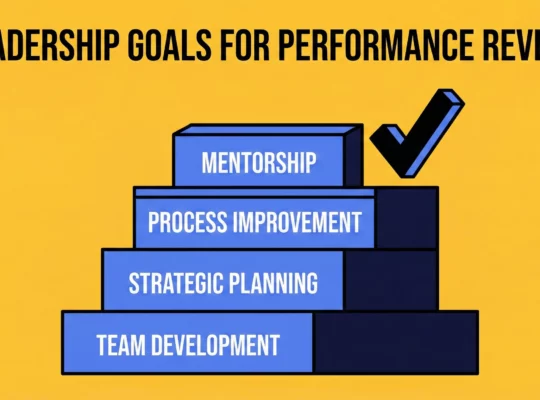Takeaways
- HR metrics are essential tools for CPOs to make informed decisions and drive organizational success.
- The top 10 HR metrics include cost per hire, time to hire, quality of hire, eNPS, absenteeism rate, employee growth rate, turnover rate, salary averages, salary range penetration, and diversity ratios.
- Regularly tracking and analyzing these metrics can lead to improved recruitment, retention, engagement, and overall workforce management.
- Data-driven HR strategies help align human resources initiatives with broader business objectives.
- Continuous monitoring and adjustment of HR metrics enable organizations to stay competitive and adapt to changing workforce dynamics.
In human resources, data-driven decision-making is paramount. Chief People Officers (CPOs) rely on HR metrics to gain valuable insights into their workforce, optimize processes, and drive organizational success. This article explores the top 10 HR metrics that every CPO should be tracking to enhance their company’s performance and employee satisfaction.
Table of Contents
Understanding the Importance of HR Metrics
HR metrics are quantifiable measures used to assess the effectiveness and efficiency of an organization’s human resources strategies and practices. These metrics provide CPOs with valuable data to make informed decisions, identify areas for improvement, and align HR initiatives with overall business objectives.
The Top 10 HR Metrics CPOs Should Monitor
1. Cost per Hire
Cost per hire is a critical HR metric that helps organizations understand the financial investment required to bring new talent on board. This metric encompasses all expenses associated with the recruitment process, including advertising, agency fees, and internal resources.
| Component | Average Cost |
| Job Board Postings | $500 |
| Recruitment Agency Fees | $3,000 |
| Internal Recruiter Time | $1,500 |
| Onboarding and Training | $2,000 |
| Total Cost per Hire | $7,000 |
By tracking cost per hire, CPOs can optimize their recruitment strategies and allocate resources more effectively, ensuring a balance between quality candidates and budget constraints.
2. Time to Hire
Time to hire measures the duration from initial candidate engagement to job offer acceptance. This HR metric is crucial for assessing the efficiency of your recruitment process and identifying bottlenecks.
A shorter time to hire can lead to:
- Improved candidate experience
- Reduced risk of losing top talent to competitors
- Increased productivity by filling positions faster
CPOs should aim to streamline their hiring process without compromising on the quality of hires.
3. Quality of Hire
Quality of hire is perhaps one of the most impactful HR metrics, as it evaluates the overall value an employee brings to the organization. This metric considers various factors, including:
- Performance ratings
- Retention rates
- Cultural fit
- Productivity levels
By tracking the quality of hires, CPOs can refine their recruitment and onboarding processes to ensure they’re bringing in top-performing employees who align with the company’s values and goals.
4. Employee Net Promoter Score (eNPS)
The eNPS is a powerful HR metric that measures employee satisfaction and engagement. It asks employees a simple question: “On a scale of 0-10, how likely are you to recommend our company as a place to work?”
Employees are then categorized as:
- Promoters (9-10): Highly satisfied and engaged
- Passives (7-8): Satisfied but not enthusiastic
- Detractors (0-6): Unsatisfied and potentially disengaged
CPOs can use eNPS to gauge overall employee sentiment and identify areas for improvement in workplace culture and employee experience.
5. Absenteeism Rate
The absenteeism rate tracks unscheduled absences and is a key indicator of employee well-being and workplace satisfaction. A high absenteeism rate can signal issues such as:
- Poor work-life balance
- Health and wellness concerns
- Low employee engagement
- Workplace stress or burnout
By monitoring this HR metric, CPOs can implement targeted initiatives to address underlying issues and improve overall employee attendance and productivity.
6. Employee Growth Rate
Employee growth rate is a vital HR metric that tracks the expansion or contraction of the workforce over time. This metric provides insights into:
- Company growth trends
- Hiring effectiveness
- Retention challenges
CPOs should analyze this metric alongside other business performance indicators to ensure that workforce growth aligns with organizational objectives and market conditions.
7. Employee Turnover Rate
Employee turnover rate is a crucial HR metric that measures the rate at which employees leave the organization. High turnover can be costly and disruptive, impacting productivity and morale.
Calculating employee turnover rate:
Turnover Rate = (Number of Separations / Average Number of Employees) x 100
By tracking this metric, CPOs can identify retention issues, implement targeted retention strategies, and reduce the costs associated with high turnover.
8. Salary Averages
Monitoring salary averages is essential for maintaining competitive compensation packages and ensuring internal pay equity. This HR metric helps CPOs:
- Benchmark against industry standards
- Identify pay disparities across roles or departments
- Make informed decisions on salary adjustments and raises
Regular analysis of salary averages enables organizations to attract and retain top talent while maintaining a fair and competitive compensation structure.
9. Salary Range Penetration
Salary range penetration is a nuanced HR metric that measures how an employee’s salary fits within a predetermined range for their role. This metric is calculated as:
Salary Range Penetration = (Actual Salary – Minimum Salary) / (Maximum Salary – Minimum Salary)
By tracking salary range penetration, CPOs can:
- Ensure pay equity across the organization
- Identify opportunities for career progression
- Make informed decisions on promotions and salary increases
This metric helps organizations maintain a fair and transparent compensation structure that motivates employees and supports career growth.
10. Diversity Ratios
Diversity ratios are critical HR metrics that track the representation of different demographic groups within the workforce. These metrics are essential for:
- Evaluating the success of diversity, equity, and inclusion (DE&I) initiatives
- Identifying areas for improvement in recruitment and retention of underrepresented groups
- Fostering a more inclusive workplace culture
CPOs should regularly review diversity ratios to ensure their organization is making progress toward its DE&I goals and creating a workplace that values and supports all employees.
Leveraging HR Metrics for Organizational Success
By consistently tracking and analyzing these ten HR metrics, CPOs can gain valuable insights into their workforce and make data-driven decisions that drive organizational success. Some key benefits of leveraging HR metrics include:
- Improved recruitment and retention strategies
- Enhanced employee engagement and satisfaction
- Optimized workforce planning and resource allocation
- Better alignment of HR initiatives with business objectives
- Increased ability to identify and address potential issues proactively
FAQ: HR Metrics for CPOs
How often should CPOs review HR metrics?
CPOs should review HR metrics regularly, ideally on a monthly or quarterly basis, to identify trends and make timely decisions.
Can small businesses benefit from tracking these HR metrics?
Yes, businesses of all sizes can benefit from tracking HR metrics, as they provide valuable insights for workforce management and improvement.
How can organizations improve their eNPS score?
To improve eNPS, focus on enhancing employee experience, addressing feedback, and implementing initiatives that boost engagement and satisfaction.
What tools can help in tracking and analyzing HR metrics?
Various HR analytics platforms, HRIS systems, and specialized software can assist in tracking and analyzing HR metrics efficiently.
How do HR metrics contribute to overall business performance?
HR metrics provide insights into workforce efficiency, engagement, and costs, which directly impact productivity, innovation, and financial performance.
By leveraging these HR metrics, CPOs can drive positive change, optimize workforce management, and contribute significantly to their organization’s success in today’s competitive business landscape.





